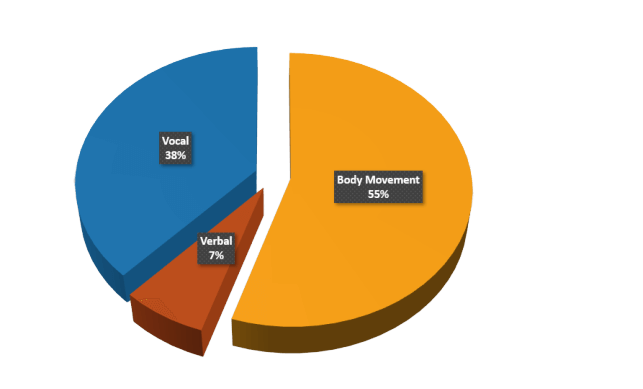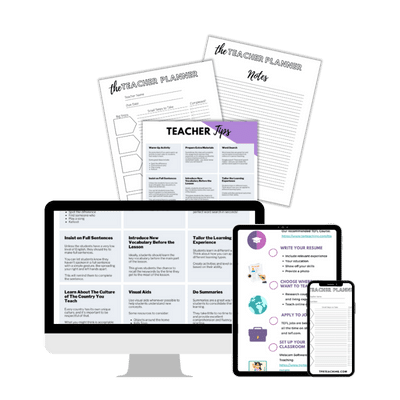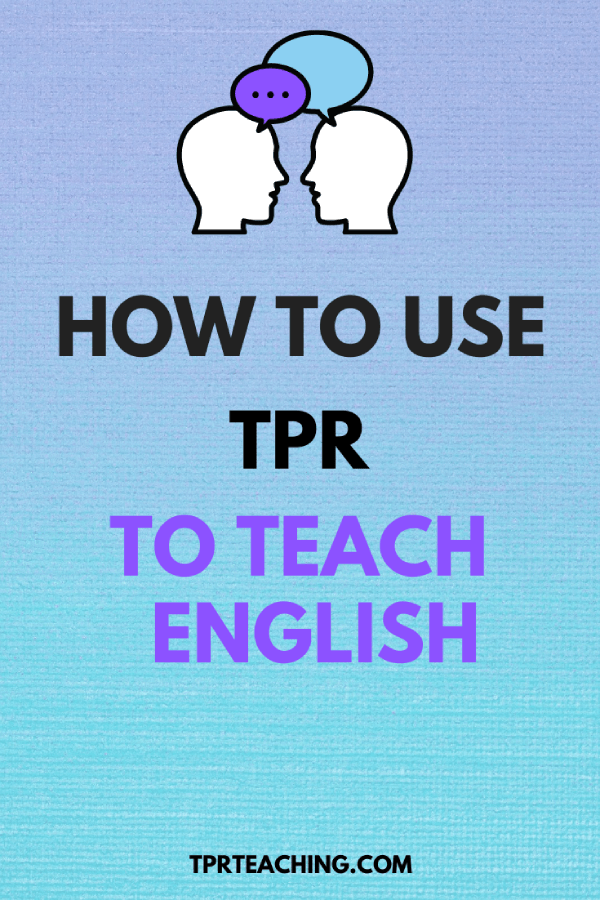This website is TPR Teaching, named after the effective language teaching method known as Total Physical Response (TPR). If you were an English language teacher at some point, you probably implemented TPR in your classes, whether you know it or not!
What is TPR?
The teaching method of TPR (total physical response) uses actions and movements to demonstrate spoken words. It engages the students and allows them to comprehend the teacher’s words.
TPR is often used with young children, as it is a very effective way to teach them new vocabulary words. It is also used with adults learning a new language, as it can help them quickly associate words with actions.
TPR is often exaggerated when teaching English online. It is especially beneficial for beginner learners who may not understand the language. This suits all types of learners and helps simplify the language.
It incorporates three types of learning – by seeing, hearing and doing the actions.
The TPR used by teachers in a classroom and an online setting varies due to space, time resources, and the number of students. It will also depend on the level and age of the student and the teacher’s teaching style.
TPR is generally best for students aged 0 – 12 years, although adults may benefit. TPR can be uniquely applied to your situation, following your own techniques. The most important thing is getting the message across to the student.

TPR is Important
TPR solves one common teaching problem – too much teacher talk time! It can also help the student remember the words, have fun and engage better in the online classroom. It makes the job better for both the teacher and the student.

Instructional TPR
Instructional TPR is used when you are asking the student to do something. Students will perform a task. This could be writing, reading, repeating, drawing, looking, matching, or circling something. This is particularly useful for beginner students who don’t know how to do these things.
Educational TPR
Educational TPR goes along with the topic you are trying to teach them in the lesson. The movements will reinforce the new words they are learning.
There are so many ways to show TPR in the classroom. For example, you could demonstrate a bunny by using your hands to mimic bunny ears on your head. You could explain a basketball by pretending to shoot a hoop.
Although it is most suitable for beginner learners, it can also be applied to convey meaning to more advanced learners.
How do I use TPR in the classroom?
Educational TPR can most effectively be implemented following the appropriate steps:
1. Act it Out
Show the student what you mean by your body movement. For example, you could raise your shoulders when asking a question or furrow your brow when confused. Make it obvious to the student what is happening through your gestures. You may need other teaching materials, such as realia or props, to help you get your point across.
Don’t just say the word, show what you mean.
2. Student Models
Have the student model what you do. Let them copy you, your facial expression, and your gestures as you speak. Speak slowly to make sure the student links this word with the movement. If the student is still not pronouncing the word correctly, you can point to your mouth and repeat the word. Be patient with the student.
Repetition is critical in helping students remember and pronounce the word correctly. If they can’t get it right after many tries, come back to it another time. There’s no point in getting frustrated.

For English Language Teachers or Those Looking to Get Started…
Teacher tips, new teacher checklist, teacher planner, and notes. Subscribe for ESL News, jobs, and more!
3. Write The Words
Write the word down on the whiteboard or Zoom so students can see it and make a connection. This appeals to visual learners. It also teaches them how to spell. When they hear a new word, you should try to include it in writing. You could also include it in their assessment form or feedback at the end of the lesson.
4. Repeat the Words
Do the same for the rest of the words that the students learn. It is important to stay consistent with your TPR. Use it many times and practice it with the students to reinforce what they’ve learned.
Review the words and recycle them naturally throughout the lesson. You can refer to them from time to time when relevant. Of course, TPR alone is not enough to help the student. Ask the students comprehension questions to ensure they understand the words. Use a variety of props and flashcards to help the student along.
Total Physical Response Examples
I have included a PowerPoint to show you some very basic examples of TPR in practice. Here are some instructional TPR points that you could use in your lesson:
Common TPR Examples
If you are teaching English to absolute beginners, it may be worth planning some TPR ahead of the lesson. Instead of telling students what to do, show them with TPR!
- Your Turn
- Match
- Asking A Question
- Say
- Good Job
- Hmm
- Look
- Think
- Nice to Meet You
- Draw a Circle
- Write
These are common instructional TPR techniques that you can use to help students learn. Stay consistent with your actions by doing the same motion each time. Eventually, students will grasp the meaning of the word without you having to apply TPR at all.

You may also be interested in: The Best English Teaching Companies in 2022.
How should I use TPR in the online classroom?
When using TPR in the classroom, you do not need to keep pointing to your mouth for the student to speak. A lot of students know that they should speak after you. If they don’t, say the word and then point to your mouth (and cup your ear, if you like). The student will understand it is now their turn to speak.
There are certain times when you can prepare TPR. Questions such as “how are you” and “how old are you” often cause confusion among young learners. Prepare for common mistakes with some well-versed TPR.
While you can prepare for some situations, there will be many times you will need to create your own TPR. Don’t sweat it! Just do what comes naturally. Remember! Body language is very important to help the student understand what you are saying.
You can also extend TPR to games and activities such as Simon Says. In the game Simon Says, you must give a command, for example, “Simon says climb the tree,” or “Simon says touch your mouth.” Students only follow the command if they say, “Simon says…”. This is a great game for kinaesthetic learners.
Conclusion
And that’s it! It doesn’t matter if you look silly; the students will appreciate your efforts to help them with TPR. Make sure to stay consistent, repeat the words, and be patient. Happy Teaching!
Online Teacher Toolkit
Be IN The Know
Get the latest jobs, news, and opportunities delivered directly to your inbox by joining my exclusive community. Grab my teacher planner, teacher checklist and tips now. Sign up here.
GEt Certified
Start your teaching journey and get certified now. Watch my YouTube video about how I got started, or read about my experience here: The TEFL Academy review.
START Your First Teaching JOb
New to the world of online teaching or just want to fill some hours in? Curious if this is a career you want to pursue? Check out Cambly to get started. Read the Cambly review.
Highest-Paying Online Teaching Jobs
In my post, I cover a list of some of the highest-paying online teaching jobs. Alternatively, use the curriculum online and find your own students. It’s easier than you think!
ACCEPT PAYMENTS ONLINE and Save money
Use Wise to accept payments from overseas. Wise has the lowest exchange rates that I am currently using right now. Get Wise.

Caitriona Maria is an education writer and founder of TPR Teaching, crafting inspiring pieces that promote the importance of developing new skills. For 7 years, she has been committed to providing students with the best learning opportunities possible, both domestically and abroad. Dedicated to unlocking students' potential, Caitriona has taught English in several countries and continues to explore new cultures through her travels.


